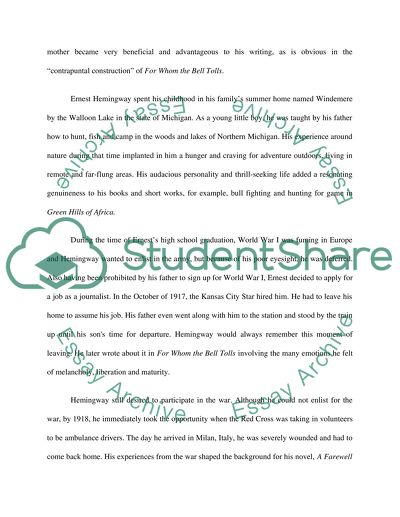Cite this document
(“Ernest Hemingway and His Works Research Paper Example | Topics and Well Written Essays - 1500 words”, n.d.)
Ernest Hemingway and His Works Research Paper Example | Topics and Well Written Essays - 1500 words. Retrieved from https://studentshare.org/literature/1595512-ernest-hemingway-and-his-works
Ernest Hemingway and His Works Research Paper Example | Topics and Well Written Essays - 1500 words. Retrieved from https://studentshare.org/literature/1595512-ernest-hemingway-and-his-works
(Ernest Hemingway and His Works Research Paper Example | Topics and Well Written Essays - 1500 Words)
Ernest Hemingway and His Works Research Paper Example | Topics and Well Written Essays - 1500 Words. https://studentshare.org/literature/1595512-ernest-hemingway-and-his-works.
Ernest Hemingway and His Works Research Paper Example | Topics and Well Written Essays - 1500 Words. https://studentshare.org/literature/1595512-ernest-hemingway-and-his-works.
“Ernest Hemingway and His Works Research Paper Example | Topics and Well Written Essays - 1500 Words”, n.d. https://studentshare.org/literature/1595512-ernest-hemingway-and-his-works.


